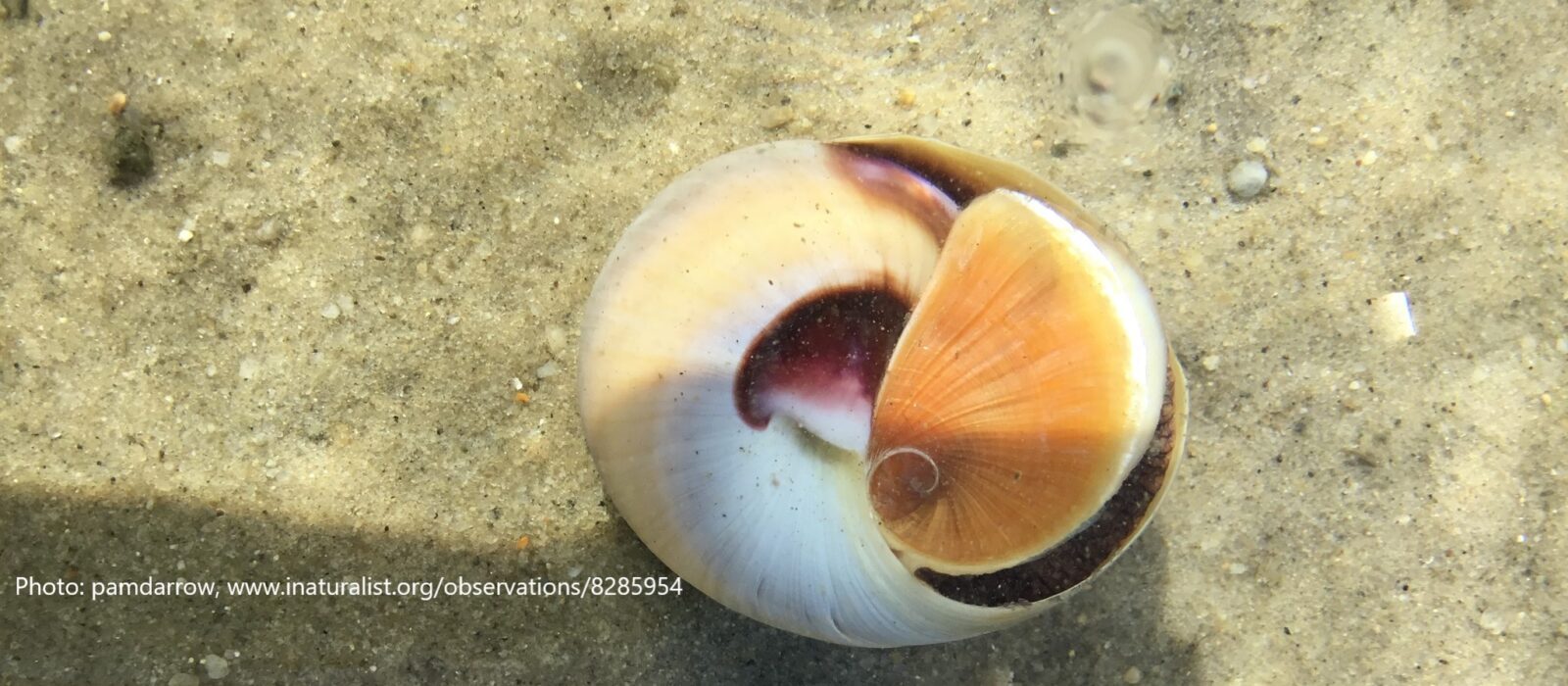Marine Mollusks
The large Phylum Mollusca has more than 50,000 described species worldwide, about 6,000 of which live in North American marine waters. The phylum has five classes, all of which are represented on the island. The present list for Martha’s Vineyard, comprising only the marine mollusks, includes 180 species; a complete modern survey has not yet been done for the island’s shore and immediate offshore waters, so there are probably more species to be found.
Mollusks are defined as having an internal or external calcium carbonate shell, a muscular foot, and an unsegmented body. It may come as a surprise to some readers to learn that such Gastropods without external shells known as nudibranchs and Cephalopods such as squids and octopuses are mollusks. Freshwater mollusks also occur on the Vineyard: the only species for which we have firm documentation is Elliptio complanata, known from Seth’s Pond in West Tisbury. But others seem possible, and searching for other freshwater species would make an excellent research project for a young naturalist. In addition, some terrestrial mollusks – snails and slugs are known from the island, and a checklist of those will eventually be included here.
Most of the marine species listed here are considered common to very common in the correct habitat and at the correct season unless otherwise noted. Species known on Nomans Land Island as well as the main island are indicated below.
As is the case with several other groups, the mollusk population of the ocean immediately around the island is a mix of forms with both primarily northern and primarily southern distributions. We are in a transition zone as is the case with marine algae, in particular, and to a lesser extent the vascular plants, lichens, and other categories.
The only recent reference specifically for island shells is Heuer (1970), regrettably now out of print. In many ways the most comprehensive study is that of Sumner et al. (1913), which was based on several years of dredging, including at some offshore locations, but primarily in Vineyard Sound. Several species that are now considered rare based on the number found washed up on the island shoreline were found by Sumner et al. (1913) to have been moderately common at that time in water even just a quarter of a mile off the beach; in most cases the present abundance of these species is unknown. A helpful field guide to many species in our area is Gosner (1979). Useful general references for our area are Abbott (1974), Abbott and Dance (2000), and Jacobson and Emerson (1961). A collection originally at the Gray Museum in Woods Hole, which is now at the Peabody Museum, Yale University, New Haven, CT, contains several species not mentioned by Heuer. Information about that collection is available on-line. The taxonomy used here is that of Abbott (1974) supplemented by information found online. We expect that the taxonomy and nomencalture of marine mollusks has progressed significantly since the publication of Island Life; but as with some other sections included on this website, we feel that partially obsolete information is better than no information at all. Hence, we are including the checklist as it appeared in Island Life, and will work to update that as time allows. We would, of course, welcome any suggestions or corrections from mollusk enthusiasts in the meantime.
Local mollusks formed an important part of the food resources for the indigenous peoples living here both before and after the island was separated from the mainland by the rising sea. The analysis of the contents of kitchen middens consisting largely of shells has usually been done as part of general archaeological investigations. There are four studies that focus on this aspect of the Indians’ diet: Speck (1948), Waters (1969), Largy and Burns (2001), and Shaw (2001).
Allan Keith; edited by Matt Pelikan, May 16, 2023
References
Abbott, R. T. 1974. American Seashells. D. Van Nostrand Reinhold, Inc. Princeton. Second edition. 541 pp.
Abbott, R. T. and S. P. Dance. 2000. Compendium of seashells. Eighth edition. Odyssey Publishing. 411 pp.
Bennett, B. (2018, September 5). Celebrity sea slugs prove photosynthesis isn’t just for plants. The Martha’s Vineyard Times.
Heuer, R. J. Jr. 1970. Exploring for sea shells on Martha’s Vineyard. Sponsored by Felix Neck Wildlife Trust Inc., Vineyard Haven, MA. 102 pp.
Gosner, K. L. 1979. A field guide to the Atlantic seashore: invertebrates and seaweeds of the Atlantic coast from the Bay of Fundy to Cape Hatteras. Houghton Mifflin Co., Boston.
Jacobson, M. K. and W. K. Emerson. 1961. Shells of the New York City area. Argonaut Books, Inc., Larchmont, NY. 142 pp.
